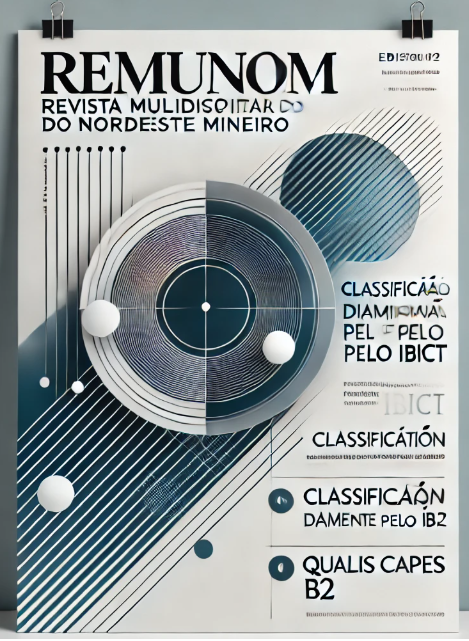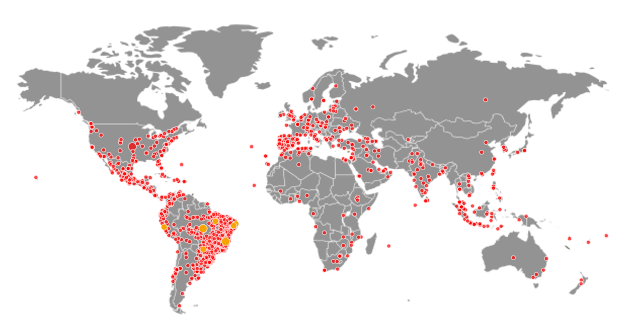LUDO IN RADIATION EXPOSURE
THE USE OF GAMES AS AN ACTIVE METHODOLOGY FOR TEACHING PHYSICS IN UNDERGRADUATE PHARMACY
DOI:
https://doi.org/10.61164/rmnm.v7i1.3759Keywords:
active learning, gamefication, meaningful learning, science education, pedagogical interactionAbstract
Teaching Physics in Pharmacy undergraduate programs faces challenges due to its perceived complexity and lack of direct applicability in the pharmaceutical field. In this context, active methodologies, such as games, emerge as an alternative to making learning more dynamic and accessible. This article explores the development and application of an educational board game to teach radiation concepts, promoting greater student engagement and understanding. The playful activity allows for the contextualization of theoretical content with practical situations in the profession, encouraging active participation and knowledge retention. Furthermore, student interaction fosters collaborative learning, making the process more effective. The results obtained demonstrate that the use of games in Physics education can significantly contribute to the training of future pharmacists, better preparing them to deal with radiation-related topics in their professional practice.
References
ALMEIDA, M. D.; LIMA, F. J.; COSTA, S. M. Jogos digitais como ferramenta de ensino em cursos superiores: Possibilidades e desafios. Revista de Educação e Tecnologia, v.11, n.2, 45-p.56, 2018.
ANDERSON, C. A.; RAINIE, L. O futuro dos jogos e da aprendizagem. Pew Research Center. 2018.
DOS SANTOS, A. R.. O lúdico no ensino superior: atividades interativas em equipes–rompendo paradigmas: The ludic in higher education: interactive activities in teams-breaking paradigms. Brazilian Journal of Development, v. 8, n. 9, p. 63840-63850, 2022.
FERREIRA, F. A. E.; SOUZA, R. A.. Ensino de física para farmacêuticos: desafios e perspectivas. Revista Brasileira de Ensino de Física, v.39, n.1, p.1-7, 2017.
FILGUEIRA, S. S. O lúdico no ensino de física: elaboração e desenvolvimento de um minicongresso com temas de física moderna no ensino médio. 2009. 104 f. Dissertação (Mestrado em Ciências Exatas e da Terra) - Universidade Federal de Goiás, Goiânia, 2009.
Gil, A. C.. Métodos e Técnicas de Pesquisa Social. 6ª edição. São Paulo: Atlas S. A., 2008.
LOZZA, R.; RINALDI, G. P. O USO DOS JOGOS PARA A APRENDIZAGEM NO ENSINO SUPERIOR. Caderno PAIC, [S. l.], v. 18, n. 1, p. 575–592, 2017. Disponível em: https://cadernopaic.fae.edu/cadernopaic/article/view/264. Acesso em: 19 mar. 2025.
MACEDO, A. S.; SILVA, T. R.; LIMA, A. M.. Metodologias ativas: Aplicações no ensino de Física. Revista Brasileira de Ensino de Ciências, v.12, n.3, p.210-222, 2018.
PEREIRA, M. H.; SANTOS, A. M.; ROCHA, G. M.. Jogos educacionais e sua aplicação no
ensino superior: Estudo de caso na área da saúde. Revista Brasileira de Ensino de Ciências e Tecnologias, v.15, n.1, p.99-108, 2019.
SOUSA, A. L.; SILVA, T. S.. O uso de jogos e simuladores no ensino superior de ciências. Caderno de Ensino Superior, v.12, n.3, p.233-246, 2020.
Downloads
Published
How to Cite
Issue
Section
License
Copyright (c) 2025 Revista Multidisciplinar do Nordeste Mineiro

This work is licensed under a Creative Commons Attribution-NonCommercial-ShareAlike 4.0 International License.




